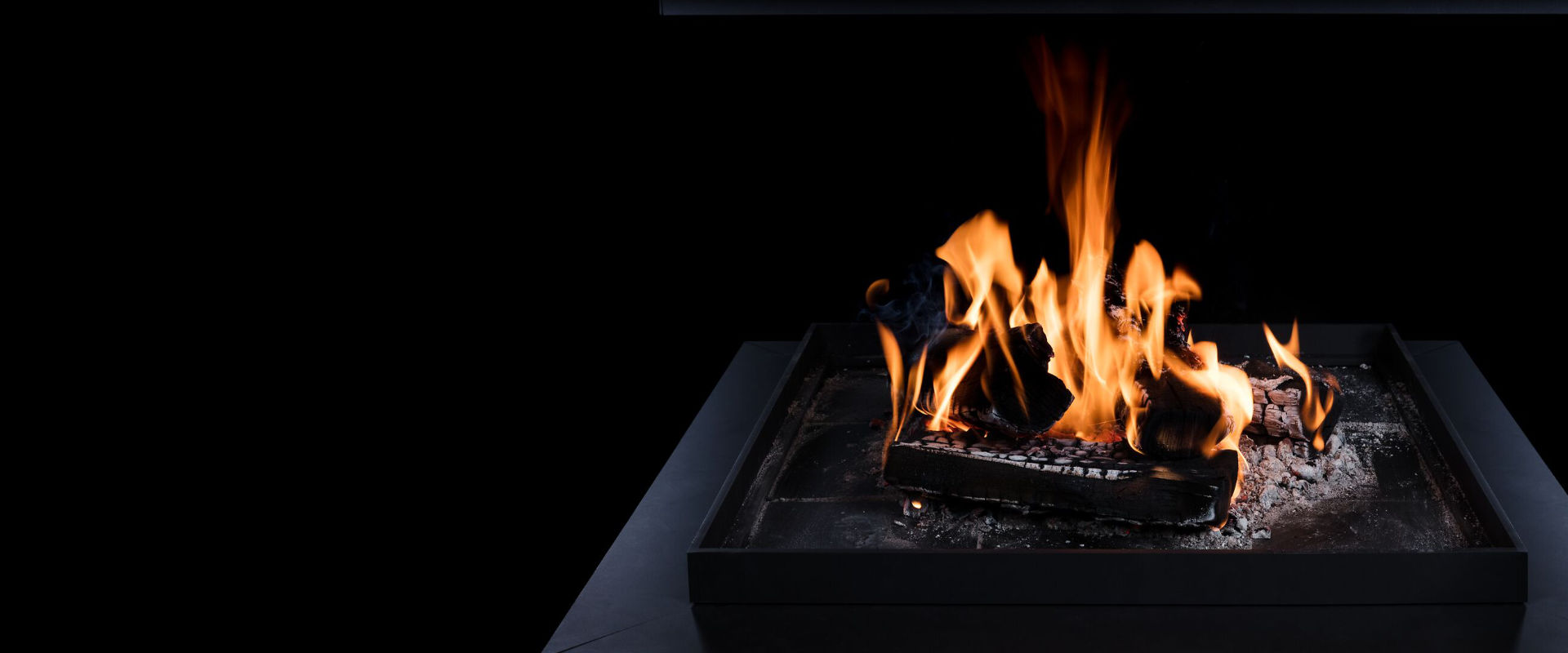What happens during the drying phase?
Wood contains moisture. When the temperature in the fireplace insert rises to around 100 °C, this water begins to evaporate. The logs shrink and develop cracks. Firewood should have a residual moisture content of less than 20 percent, meaning it should be well dried. If the wood is wetter – which can be recognized by the distinct hissing sound as it evaporates – more heat, and therefore more energy, is required during combustion.
You can find more information on proper heating in our blog post.

The burnout phase/oxidation is the actual combustion
When the volatile components of the wood have burned off, the next stage begins at temperatures between 600 and 1300 °C. Combustible gases are released, and the remaining roughly 30 percent of the heat energy is generated. The flames are now short and translucent. Once oxidation is complete, only ash remains. Good and clean combustion leaves behind fine, white ash. If larger amounts of unburned fuel, charcoal, or soot particles are visible, this indicates incomplete combustion.
Conclusion
To ensure that all phases of the combustion process (drying, degassing, oxidation) run as cleanly and efficiently as possible, the wood must not be damp. Only well-dried firewood with a residual moisture content below 20 percent should be used. In addition, sufficient air supply during combustion is essential for optimal heating performance and high efficiency.
Expert advice
During the degassing phase, the majority of the firewood’s heating value is released – around 70 percent. The flames are particularly strong, bright yellow, and blazing. At this stage, only the carbon framework of the original wood remains.





